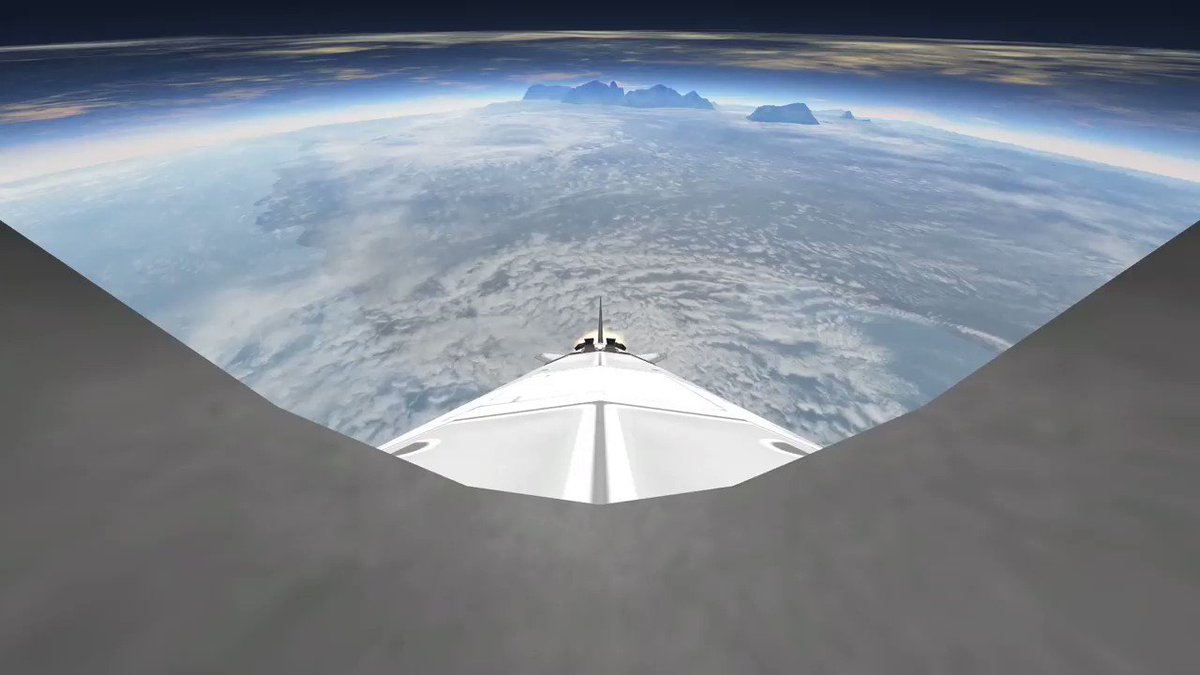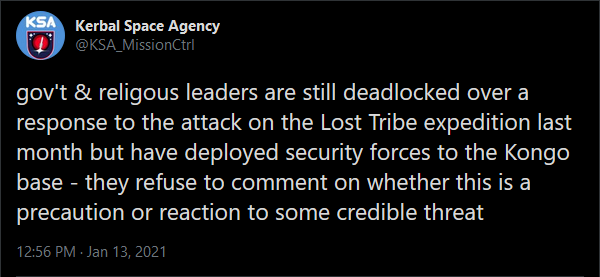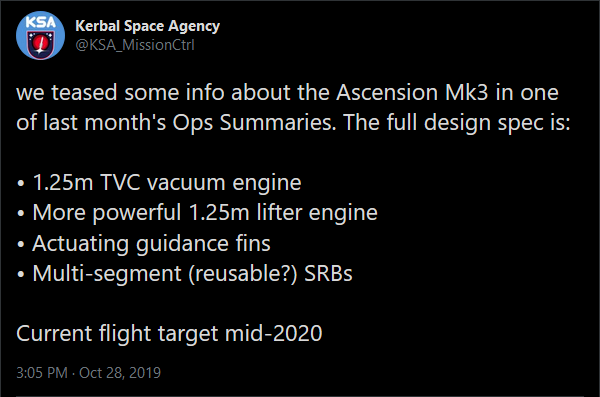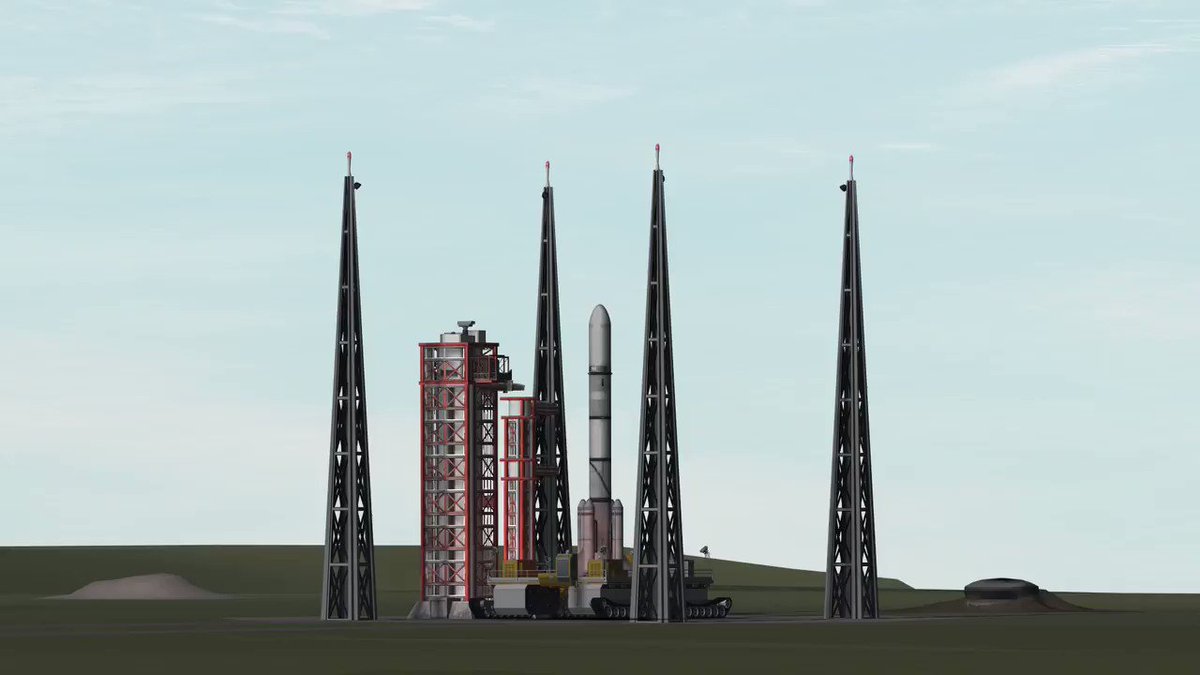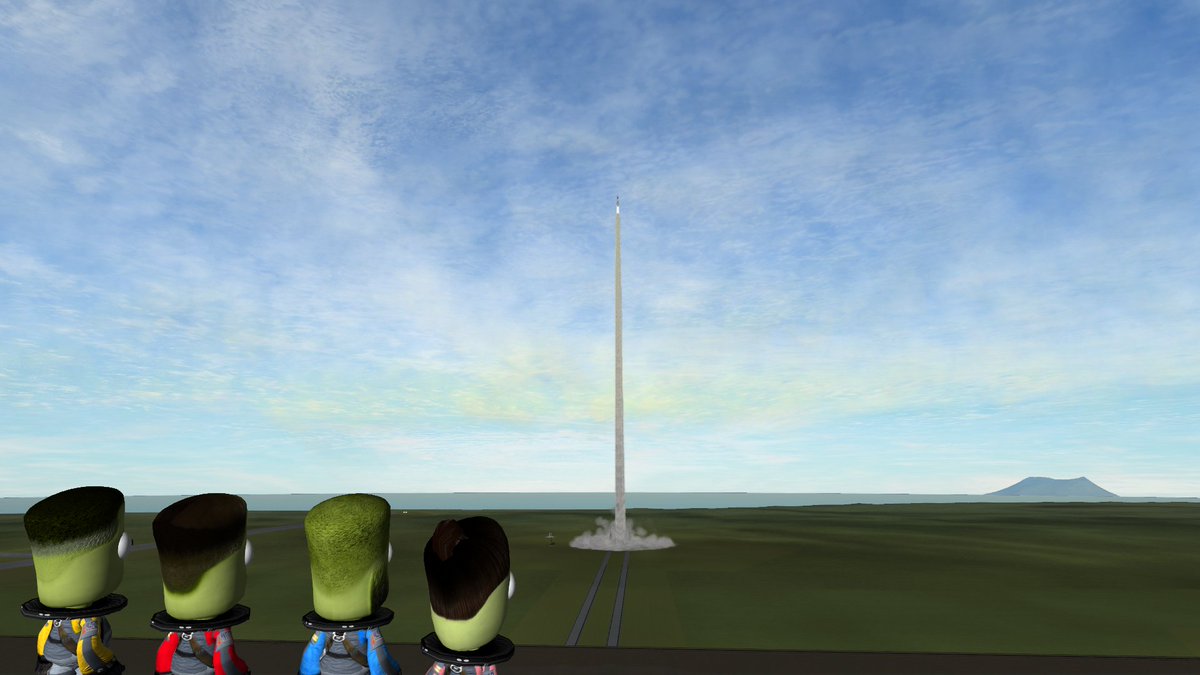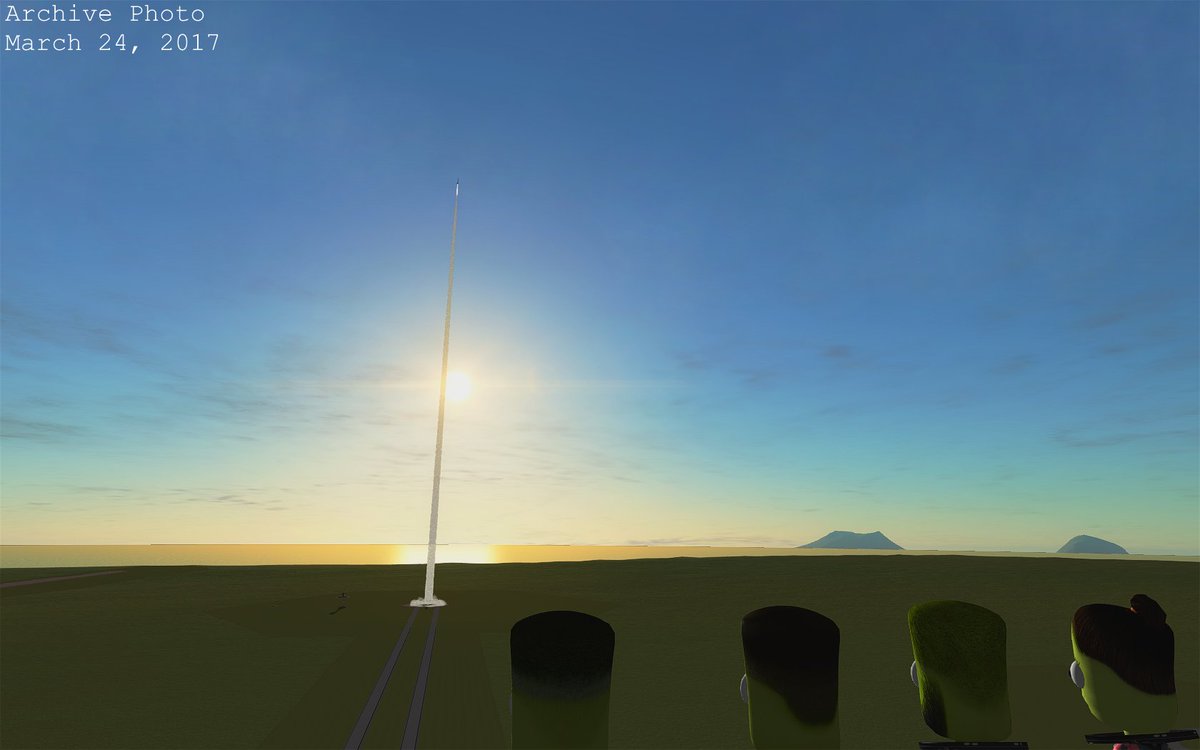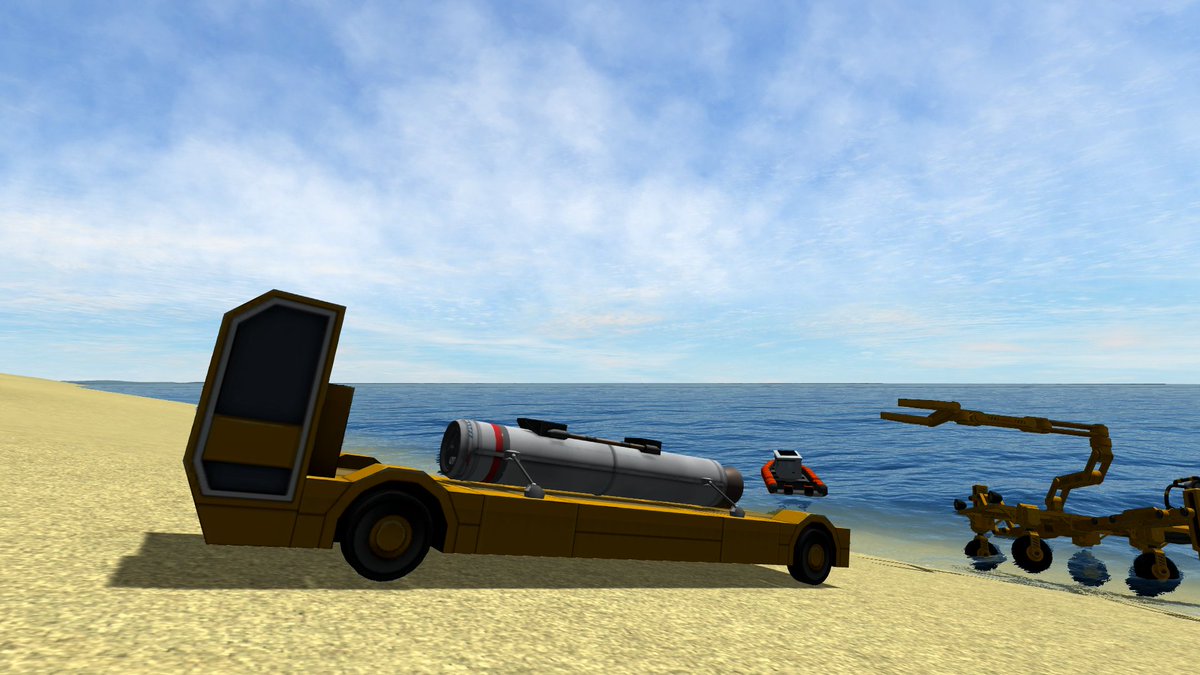|
KSC Ends 2017 Operations for Building Survey
Today was the last day we will be carrying out operations at the Kerbal Space Center. Next week all the buildings will undergo engineering inspection to determine how they are holding up after just over a year and a half of wear since their construction back in 2016. These are the first large-scale surface structures that have been constructed in over 200 years and we want to make sure they will continue to stand for many years to come! The VAB will come under the most scrutiny due to its height but even the HAB has issues that need to be further inspected.
Additionally, a site survey will be done around the Administration Building to see about expanding it so we can support more operations onsite instead of only from KSA headquarters in Umbarg, which is where all still-running operations will be based out of next week. After next week the KSA itself will cease operations for the New Year holiday and return to KSC on Jan 2nd, 2018.
Progenitor Team Closes out 2017 with Successful Launch
Yesterday saw the return to flight for the Progeny Mk5 Block I after it suffered a series of mishaps during its previous launch 1.5 months ago that required a good amount of analysis and redesign. Everyone was very happy with how this recent flight went despite introducing two new issues that affected the ascent. First we had the second stage fins explode at the same time the stage was decoupled rather than one second afterwards and then during the third stage throttle-up it refused to go past 76%.
The first issue could have numerous origins and all are currently being looked into but the second issue was fairly straightforward to figure out once we got a good look at the telemetry data from the flight. The throttle stopped increasing the moment the rocket reached the edge of the atmosphere, which led engineers to look at the code for this stage of the flight and there is where the issue was: once space was reached pressure was 0 and it could never be more or less than that so the code stopped increasing the throttle. We had not anticipated the throttle-up occurring while the rocket was outside of the atmosphere – and it wouldn’t have if the second stage decoupling issue hadn’t put enough precession into the third stage to trigger the new AoA constraint and allow the launch team to wait so long before triggering the final booster. The throttle eventually reached 100% as the rocket fell through the atmosphere during re-entry which is why the third stage boost termination message came so late in the operations log (included with telemetry data).
One problem solved, one to go – but further investigation has been hampered by an issue with our High Data-Rate Logger, which is a separate dedicated monitoring instrument that stores vessel parameters at 0.25s intervals, 4x faster than the normal logger that runs with the AFCS (so that more attention can be dedicated to operating the rocket). It seems the data storage disk was formatted improperly so reading the data has become a tedious recovery task (this is why you don’t see the high-resolution graph atop the telemetry data). We’ll have better quality control in place for this instrument for future flights and engineers are hopeful that some or all of the data can be eventually recovered.
Some additional oversights were found in the AFCS to be corrected, and full analysis on the flight is still underway and will be well into next week. Before we break for the New Year though the Progenitor team will determine what needs to be done to launch our first rocket in 2018 and when.
Genesis Program Dips Foot into Computerized Flight Assistance
Captain Jebediah gave up control in this week’s Civvie flight to a computer for the first time while flying in the region around KSC. The Civvie had been modified to allow the computer to actuate the various control surfaces, fitted with extra sensors and C7 engineers programmed a series of very basic tests to ensure the computer could make the aircraft roll, yaw and change its pitch to all extents. Jeb said it was definitely weird to be sitting in the cockpit watching the control yoke move and the aircraft bank and have to resist the urge to grab it and bring the wings back level. The tests were all successful and C7 hoped to have a simple PID controller ready to attempt to hold wings and pitch level on the next flight but difficulties with the program forced them to remain in the lab working on the code. The ultimate goal of course if a full autopilot capable of flying the aircraft on a preset course but for now both Jeb and Val agree they would love to just have a means of keeping the wings and nose level without constant minor control inputs and attentiveness from them. The testing is expected to resume at the start of next year.
Mysterious Asteroid Impact Investigated
Ever since the Asteroid Tracking Network began its survey of asteroids they have been finding more and more giving off weird spectra, as if they were glowing different colors for some reason. A few have been identified as Near Kerbin Objects (NKOs) and made passes of Kerbin during which they were photographed as best as possible. One turned out to be magenta, another green. Not much detail could be made out at the distances they passed which is why astronomers were excited to hear one would be impacting our planet. Unfortunately it came in from the sun on a highly-inclined trajectory and no photos could be taken during its approach, but fortunately it seems that it did in fact impact as predicted and now the site has finally been visited. We have no way of knowing whether the material carried on this asteroid is harmful – radiation testing was carried out with a remote-operated airship over the impact site and nothing was detected but no chances are being taken. The next step has just been completed, where volunteers entered the region around the site and setup monitoring instruments to see how the flora and fauna react to the impact over the coming months. The volunteers too will be initially quarantined and studied for any ill effects.
In related news, a new study was published this past week showing how many asteroids have hit Kerbin over the past year or so using data gathered from a network of seismic sensors. Unsurprisingly, our limited sky coverage has us finding less than 50% of the NKOs in our immediate neighborhood.
ATN Database Update
The weekly update for the Asteroid Tracking Network database is available here, containing 1,325 asteroids and 24 updated with new observation data.
Celestial Snapshot of the Week
(L to R) Pol, Laythe, Jool, Tylo, Bop (circled) and Vall. The shadows of Bop and Tylo are currently transiting across the cloud tops of Jool. Pol is actually the smallest moon but has a much higher albedo than Bop which is why it is so visible despite the fact that it is on the other side of Jool along its orbit at this time. Photo credit: the Kerman Observatory’s 4m reflector atop Kravass.
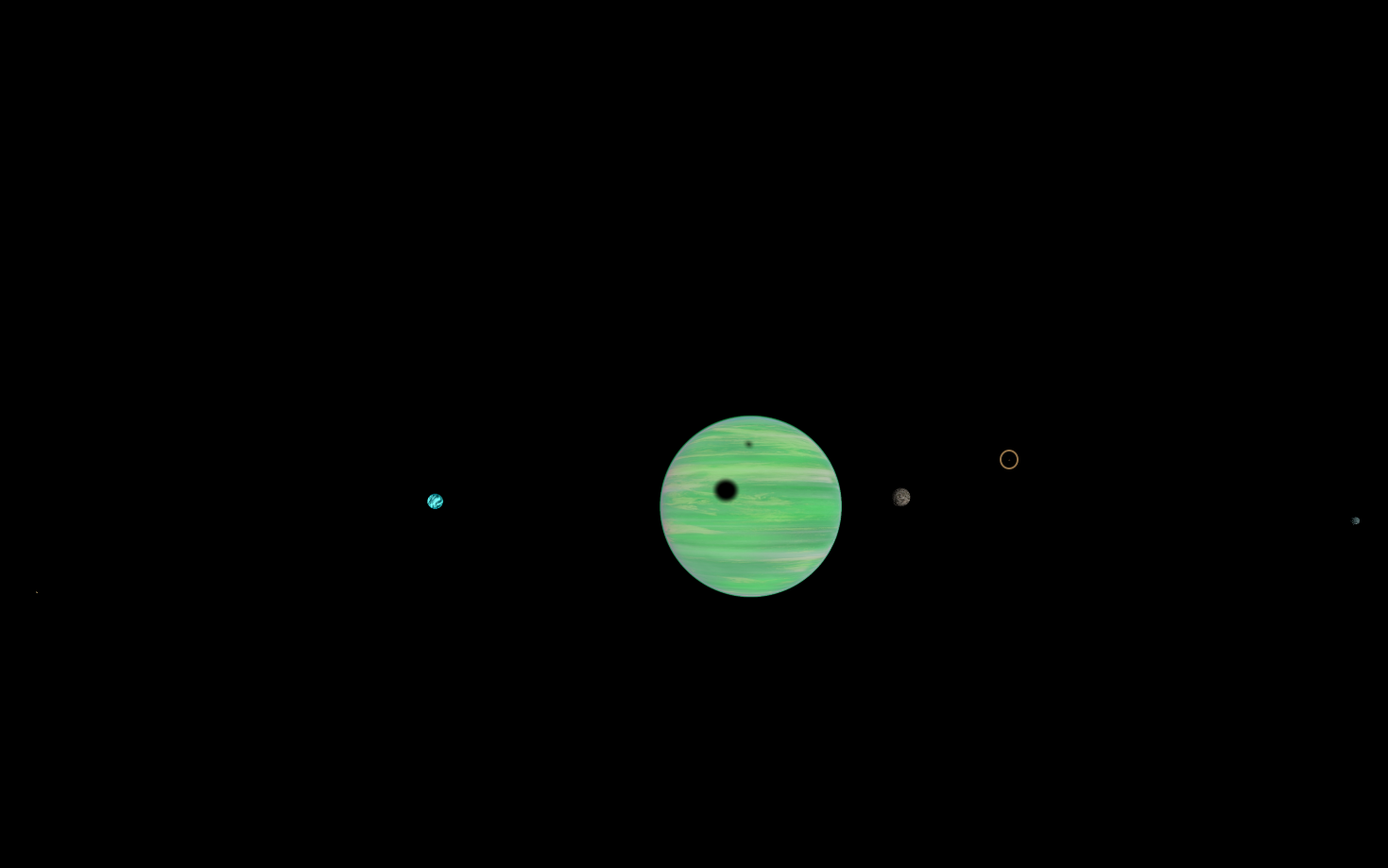 From the Desk of Drew Kerman
From the Desk of Drew Kerman
Out of Character Behind the Scenes stuffWritten on 12/14/17
yea that’s right, the night before. I even took it close to the wire for this week’s Progeny launch. Main reason was GTA:Online was doing some ingame stuff that was well worth my while to dedicate some serious time to it over the weekend at the exclusion of all else – although I did find that I was able to run KSPTOT trajectory calculations for Extremis routes in the background without affecting my GTA gameplay so that was one other thing I worked on at least. Now that KSC operations are closed out, which take up the bulk of my time (launches and aircraft flights mainly), I can really knuckle down and see how much lead time I can push out to before the end of the year and ops resume at the start of 2018.
Mk5 launch prep freakout
Had a bit of a freakout when I was testing the updated AFCS code for the Mk5 launch. I use the same vessel but just launch it straight up so the code can run through its routines but the actual flight is still unknown to me. The first stage booster burned for over a minute and I was horrified that I may have done something wrong in all the events leading up to the launch like the booster test fire which I couldn’t go back and undo. Thankfully it turned out that I still had the thrust in the VAB set to like 48% whereas the thrust curve was set to like 46% so the actual thrust output was like 2% – I didn’t realize the thrust curve obeyed the thrust setting in the VAB, I thought it always assumed 100% thrust. Phew.
First launch attempt failed
I always hate when I have to relaunch something, because no two launches are ever exactly the same and after the first time I have a better idea of what will happen going into it. Fortunately in this case the problem wasn’t a game crasher and I could react to the flight issues the first time and then just do it again that way for subsequent tries. The problems that marred my first attempt was an issue where the FAR windows like to hide themselves during staging, for which I have a workaround but for some reason it didn’t work this time. Also the AFCS crashed again like in the last launch. After some debugging I finally traced it down to this kOS issue. I did all my testing with the previous Mk5 Block I rocket so this Mk5 flight officially took two attempts, the second try after fixing the kOS issue is the one that is written up for the KSA.
Graphotron issue
The deal with the High Data-Rate Logger is a cover for the Graphotron acting funky and for some reason not properly recording the start of the ascent properly. I think it may be because I’m using too many data points to give enough charting time for a mission that can last as long as 20 minutes. Next launch I’m just going to revert to the 5 minute length and only publish the ascent to space with the telemetry data.
I don’t “simulate” things
I was so very pleased to see the MaxQ stay under 80kPa as had been planned, mainly because that was something I calculated based off previous Mk5 flights. I don’t run “simulations” in the game where I throw things out to the pad and see whether they behave the way I want them to for things like this. So yea, the launch could have had a MaxQ greater than 80kPa I had no idea for sure until I actually launched the rocket. See, a lot of people may think that the things that happen to cause my rocket development to meander about is done on purpose for the sake of “story” but the reality is that I really could have better rockets by now if I actually knew better what the hell I was doing 😛 But that’s something I purposely want, because as time goes on my rocket programs will naturally begin to improve. Most of what has happened to stall Progenitor development wasn’t done to purposefully draw it out over months and months.
Case in point…
So to continue that thought, this recent launch had two issues, both of which were due to simple oversights on my part, not planned problems. I’ve already identified the reason behind one and will save the second for next week but the point I want to drive home is that these were real problems I had no idea about until they happened. I like that, because I’m actually doing investigations using the data I’ve collected to help me determine what went wrong and why. The code error was pretty cool, the other one was just plain stupidity on my part. One of the downsides to going this alone is I can miss a lot of things that other collaborators would probably pick up on. Still, I like doing it all myself anyways.









